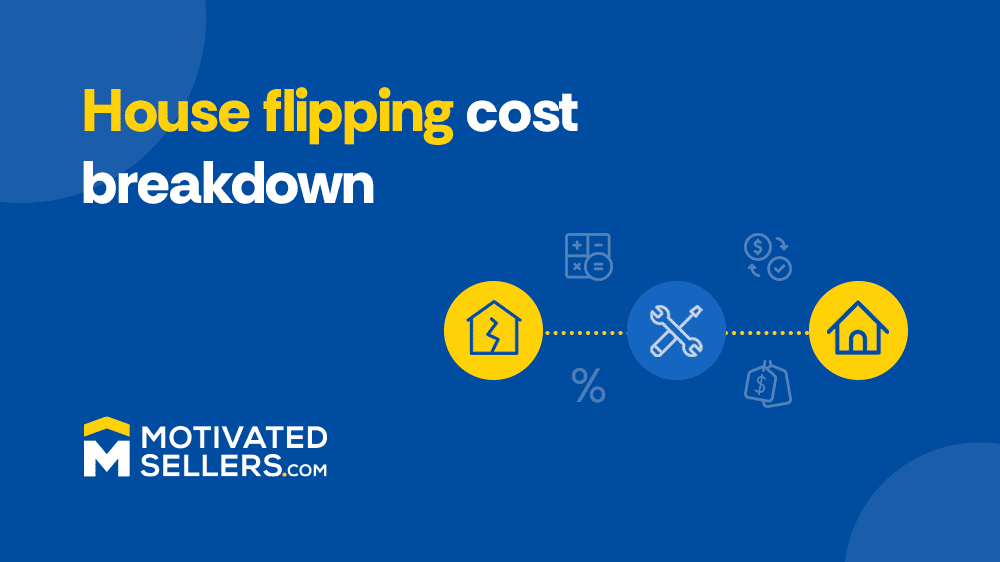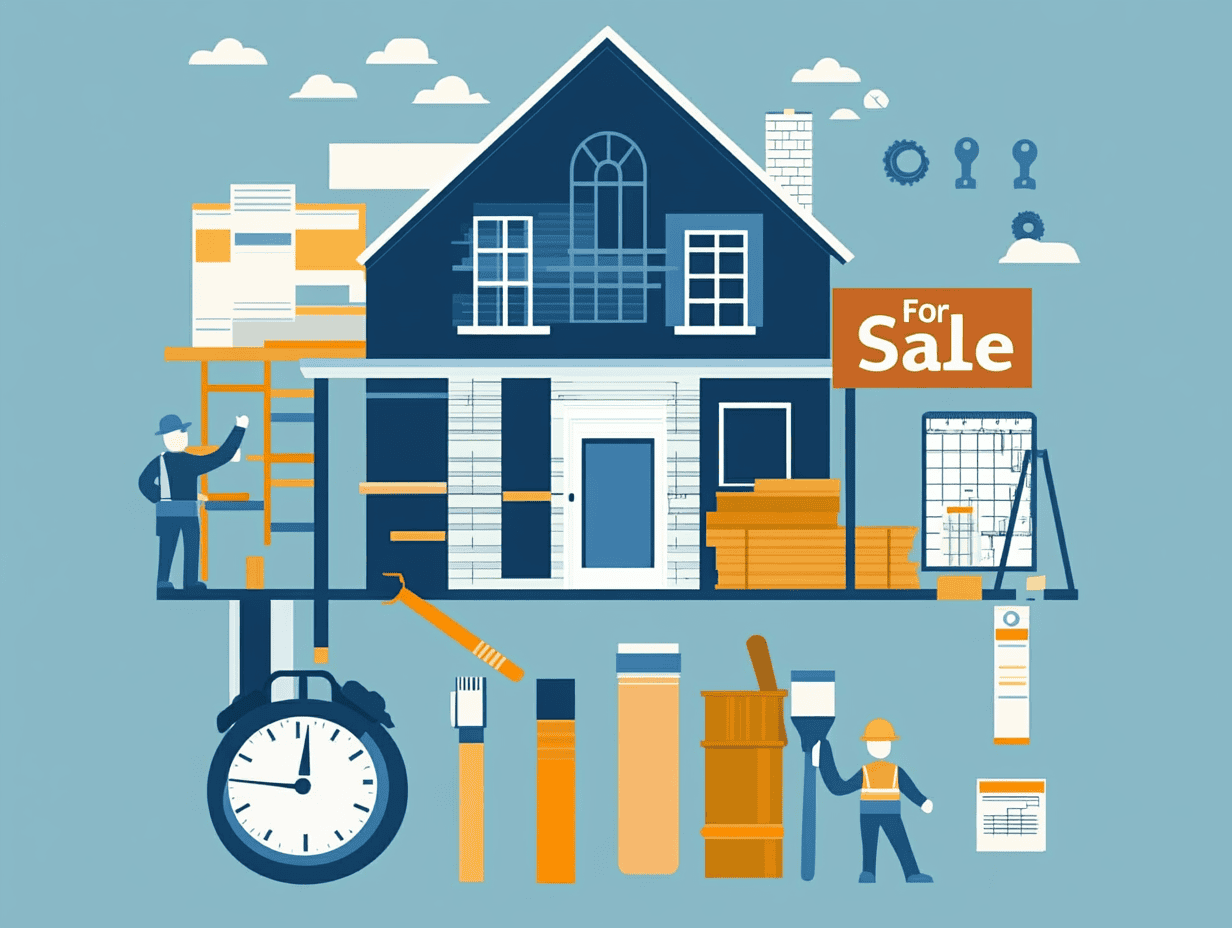

The cost of flipping a house depends on several factors, such as the purchase price and the cost to remodel and hold a property. Experienced investors research accurate numbers so they can renovate a house without losing money.
In this article, we’ll discuss:
Flipping a house looks simple on HGTV, but the actual process is far from easy. It takes meticulous research on every step of the buying, holding, and selling process. You need to find a motivated seller lead to acquire a low-priced asset.
Flipping a house can quickly become stressful if you haven’t done your research. Overestimating ROI can result in wrong price calculations and expensive renovations. It’s important to conduct accurate calculations while leaving some cushion for unexpected expenses.

The 70% rule states that you should never spend more than 70% of a property's projected after-repair value (ARV) on both the purchase price and renovations. For example, if you're considering a property in a desirable neighborhood with an ARV of $400,000 and estimated repairs of $50,000, the calculation would be:
70% of ARV = $280,000
Your total acquisition and renovation costs should not exceed this amount to earn a profit from this deal.
But why was this rule established? While $280,000 may seem like a low purchase threshold for a home valued at $400,000, the reality is that flipping involves numerous hidden costs. Beyond renovation expenses, investors must account for additional financial obligations, such as:
Unless you're purchasing a property outright with cash, securing financing is a critical step you must complete. Traditional mortgage lenders offer lower interest rates, but they have strict lending requirements along with a lengthy approval process.
Your primary financing options include:
For example, borrowing $250,000 at a 10% interest rate results in an interest payment of $2,083 per month. This is before factoring in additional costs such as origination fees and points. The right financing method can impact your overall profit, so investors must balance speed, cost, and flexibility when selecting a lender.
Renovating a property goes beyond repairing essential systems. Many investors underestimate total renovation expenses, leading to budget overruns and reduced profit margins. Here’s a breakdown of common costs you should anticipate:
The exact rehab costs will depend on the specific property and the neighborhood. Analyze the cost against ARV to ensure repairs make financial sense from an investment perspective.
Your total selling costs can include 3%-6% of the sales price, with a major portion being spent on realtor commissions. Other potential selling expenses include:
Finding the right property is the foundation of a successful investment. The most profitable opportunities come from distressed properties, including foreclosures, short sales, probate sales, and bank-owned homes, where sellers are more likely to negotiate below-market prices.
Another important part is the location. Look for areas with strong demand, rising home values, and desirable school districts. It doesn’t matter whether you’ll rent or sell the house after renovation. The location matters as only the location attracts future residents or tenants.
First-time flippers can underestimate the challenges of the renovation process. You must not overpay for the property even if it has significant potential. Stick to the 70% ARV rule and research comparable sales before making an offer. Get detailed estimates from 3-5 contractors for the work involved. Request detailed bids down to every minor detail, including paint color. Leave a cushion of 10-20% for unexpected expenses.
The right funding method depends on your financial situation, risk tolerance, and investment goals. Here are various ways to secure funds for your house flipping projects.
Real estate investing requires flexibility, as market conditions and personal circumstances can shift unexpectedly. Having a well-planned exit strategy ensures you can still secure a return on investment, even if your original plan doesn’t work out.
One option is renting out the property if the market slows. Hold the house to generate rental income until conditions improve. You can offer rent-to-own financing to attract tenants who have the potential to buy the house later.
If you’re unable to complete the flip as planned, wholesaling can be a viable alternative. By assigning the contract to another investor for a fee, you can exit the deal while recovering your initial investment and making a profit without renovating and selling.
Since most flips are completed in less than a year, short-term capital gains taxes apply, meaning profits are taxed as regular income—potentially at a higher rate than long-term investments.
A 1031 exchange can be a powerful strategy for deferring taxes. By reinvesting profits into another investment property, you can defer capital gains taxes and continue growing your portfolio tax-efficiently.
Your business structure also plays a crucial role in tax planning. Forming an LLC can help protect personal assets from liabilities and offer potential tax advantages, depending on your income structure.
Additionally, house flippers can reduce their taxable income by deducting renovation costs, loan interest, marketing expenses, and other business-related expenditures. Keep detailed records of every expense to maximize deductions. Consult a tax professional to develop a strategy that aligns with your investment goals while staying compliant with tax regulations.
Every extra day spent on home renovation costs you money. A strategic, proactive approach can reduce your turnaround time. Here’s how experienced investors streamline the process:
Plan Renovations Before Closing the Deal
Do not wait until the closing to finalize your renovation plan. Work with your contractor and inspector before the closing to outline necessary repairs, estimate costs, and create a timeline. With a detailed scope of work ready, you can start renovations immediately after taking ownership.
Hire Multiple Contractors for Simultaneous Work
A single general contractor managing all aspects can cause unnecessary bottlenecks. Instead, consider hiring multiple specialized contractors—such as electricians, plumbers, and painters—to work in parallel. This ensures critical tasks are done without waiting on one team to finish before the next begins.
Order Materials Early to Avoid Delays
Non-availability of the construction material can hinder your progress. Order high-demand materials like flooring, cabinetry, and appliances early to avoid supply chain disruptions. Establish relationships with reliable suppliers to get materials quickly at a better price.
Schedule Inspections in Advance
Investors can overlook the time lost waiting for permit approvals and final inspections. Schedule inspections as soon as possible, preferably before acquiring the property. If you understand the turnaround time in your market, you can factor it into your estimate.
Set the Right Price
Work with a knowledgeable real estate agent to analyze recent comps and price the home competitively. Consider minor incentives, such as paying closing costs or offering a home warranty, to attract serious buyers quickly.
Optimize each phase of the flipping process. Plan ahead, hire experienced contractors, purchase materials early, and set a strategic price. You can flip properties faster and reduce holding costs to increase overall returns.